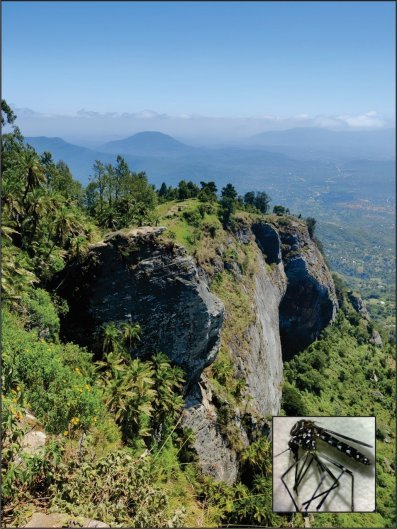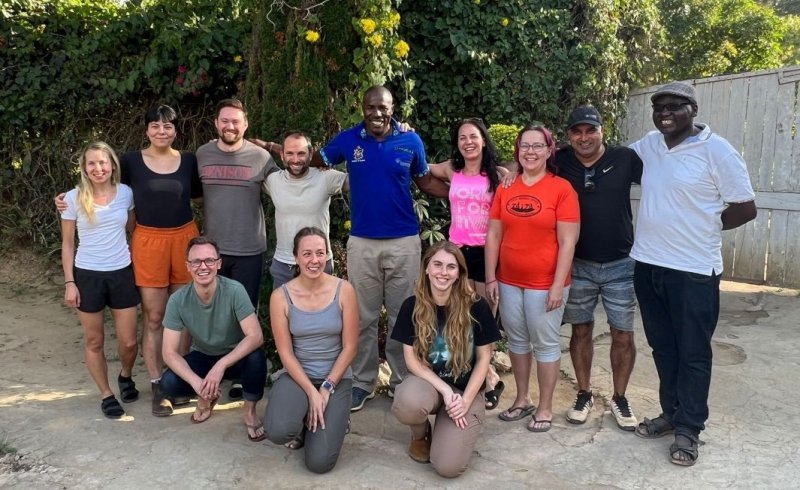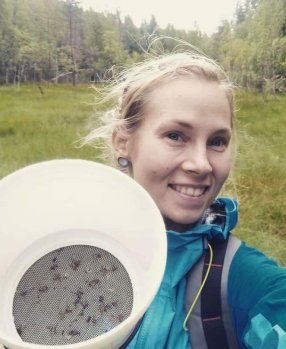Environmental changes increase the burden of disease in Kenya’s Taita Hills
Dengue, malaria and yellow fever are among the most common vector-borne contagious diseases, in other words, diseases that are transmitted to humans from infected mosquitoes and other arthropods. Climate change has increased their prevalence, and a total of 80 per cent of the world population live in high disease risk areas – therefore, more research data is needed.Published 4.5.2023
Text and image: Ruut Uusitalo
Editing: Viestintätoimisto Jokiranta Oy
Vector-borne diseases are infectious diseases caused by protozoa, bacteria or viruses. They are spread to humans by infected mosquitoes or other arthropods, or through the contact between a human being and an infected host animal. Approximately 17 per cent of all infectious diseases are vector-borne, and they cause the death of more than 700,000 people every year.
Up to 80 per cent of the world population live in high disease risk areas. The global processes of change, such as climate and land cover changes, are connected with vector-borne diseases that challenge the public health, economy and security.
Climate change has increased the burden of disease caused by vector-borne diseases, especially in developing countries. With our research, we aim to increase awareness of mosquito-borne diseases and endeavour to develop strategies that would help both the public health authorities and local residents of developing countries to fight mosquito-borne diseases.
A global health risk
The transmission process of vector-borne diseases is complex. In addition to the vector species, it is affected by the actions of humans as well as mammal host animals that act as reservoirs of these pathogens. Vector-borne diseases are a global problem. When a locally occurring new pathogen spreads, it may cause a global health crisis. The burden of disease is highest in developing areas, such as Africa, where most epidemics of infectious diseases emerge.

Our research in Kenya’s Taita Hills concentrates on, among others, the potential habitats – both current and future – of one particular vector species that is known to transmit dengue fever, Aedes (Stegomyia) aegypti. We are also studying the effects of land cover changes on mosquito-borne diseases and looking for practical solutions for their prevention. In addition, we are screening all collected mosquitoes for viruses.
The Taita Hills, located in the Taita Taveta County in south-eastern Kenya, is a versatile area in terms of its biodiversity, and mosquito research in the area has been minimal thus far. The altitude differences in the Taita Hills are high, and there is major variability in rainfall. Also, changes in land use have increased primarily due to the fact that land areas have been cleared for farming to feed the growing population in the area. More people are travelling from the Taita Hills to the city of Mombasa, located on the coast, and several dengue and chikungunya epidemics have broken out there during the past decade. These facts offer favourable conditions for the transmission of mosquito-borne diseases in the Taita Hills.
Taita Hills is a region characterised by a varied biodiversity and considerable altitude differences. The smaller picture shows a yellow fever mosquito, Aedes (Stegomyia) aegypti. Pictures by: Ruut Uusitalo.
Will malaria be replaced by dengue?
Aedes aegypti, the yellow fever mosquito that has spread widely particularly in subtropical and tropical zones, can transmit, among others, the yellow fever virus, dengue virus or chikungunya virus. The mosquitoes are poikilothermic and, as such, are especially susceptible to climate and environmental changes. Changes in climate and environment affect the survival and behaviour of the mosquitoes but also the development of the diseases they transmit. It has been predicted that the climate in Kenya will become more humid, the rainy seasons will be more intensive and the air temperatures will increase by 2–4 degrees by the year 2100.
In Kenya, as is the case in the entire sub-Saharan Africa, the effects of climate change may lead to a situation in which the prevalence of malaria reduces and that of dengue and other arbovirus diseases increases. In sub-Saharan Africa, the impacts of climate change may result in a shift in disease burden from malaria to chikungunya and dengue as dengue transmission peaks at 29°C for Aedes aegypti, and malaria transmission at 25°C for Anopheles gambiae.
In January 2023, we started systematic mosquito collection in the Taita Hills, where we use a mosquito aspirator to collect adult mosquitoes from a hundred different locations during dry and rainy seasons. We apply habitat suitability models and utilise high-resolution climate and environment data. Also, various socioeconomic development paths have been taken into consideration to enable us to assess and predict the current and future disease risk in the area.
Zoonoses have become more common
The land cover changes caused by deforestation and urbanisation may alter the microclimate that is vital for mosquitoes, the availability of nutrients and, for example, the competition between different mosquito species.
The indigenous cloud forests in the Taita Hills have suffered considerable degradation due to agricultural expansion, and it has been estimated that up to 60 per cent of the surface area in the region will be covered by cropland by the year 2030. The number of outbreaks of zoonoses, in other words diseases that are passed from animals to humans, is increasing in the region. This change is thought to be partly associated with the increased contact between humans and wild animals.
In our research, we collect mosquitoes from 20 forest remnants around the Taita Hills and, using land cover material from several years, evaluate the land cover changes in the forest remains. Based on this data, we will be able to draw conclusions on the effects of changes on mosquito populations and mosquito-borne diseases.
Higher risk of disease in concrete buildings?
During our first pilot study, we noticed that there were almost invariably more mosquitoes in buildings made from concrete that in dwellings made from mud or wood. This may be due to the structural differences between the houses that affect the temperature and humidity inside the dwellings. To draw more detailed conclusions, we will be collecting mosquitoes from dwellings made from six different materials – in total, from 60 dwellings all over the Taita Taveta County.
While collecting the mosquitoes, we will also gather data on, for example, stagnant sources of water near the dwellings, domestic animals as well as the prevention strategies utilised in the houses, such as the use of mosquito nets. This way, we hope to get an idea as to how high the risk of mosquito-borne diseases is in the area. We expect to find proof of connections between housing solutions and mosquito abundance. This would help us to provide the local people with practical propositions as solutions to prevent mosquito-borne diseases.
Multidisciplinary collaboration

Ecologists, veterinarians, virologists and geographers, among others, contribute to the multidisciplinary research environment.
Picture by: Mika Sironen
Most of the infectious diseases that originate from wild animals emerge in Africa, and their number is increasing. The distribution of viruses is limited by the distribution of the host animal and suitable vector species, and high-quality habitat suitability maps of mosquito vectors will help public health authorities to see the risk areas. This makes it easier for them to assess the areas in which preventive actions would be necessary.
Also, we endeavour to get an impression of the ways in which land cover changes affect the mosquito-borne diseases in the Taita Hills, especially as this subject has not previously been studied. Long-term study material on mosquito vector species and the pathogens they transmit will increase understanding on their prevalence in the area.
This research is a part of a more extensive zoonosis study in which we investigate, in addition to mosquito-borne diseases, diseases that are transmitted by bats, ticks and rodents in Kenya's Taita Hills. Carrying out research on vector-borne diseases requires a multidisciplinary approach. Our research group works actively in a multidisciplinary scientific environment involving, for example, virologists, geographers, veterinarians and ecologists. We hope that the results of our work will help the local people to curb and prevent the transmission of vector-borne diseases.

Ruut Uusitalo works as a postdoctoral researcher at the University of Helsinki and belongs to the Viral Zoonosis Research Unit and Earth Change Observation Laboratory research group. In June 2022, she defended her doctoral thesis on a multidisciplinary topic concerning the habitat suitabilities for vector species that are important in Finland and Kenya and the risk analyses of vector-borne diseases. With the help of the grant awarded by the Sakari Alhopuro Foundation, she is currently focusing on utilising both her geographical and virological knowledge while investigating, in particular, the effects of climate and land cover changes on important mosquito vectors and mosquito-borne diseases in the Taita Hills of south-eastern Kenya.
Links:
https://www.helsinki.fi/en/researchgroups/viral-zoonoses-research-unit
https://www.helsinki.fi/en/researchgroups/earth-change-observation-laboratory
